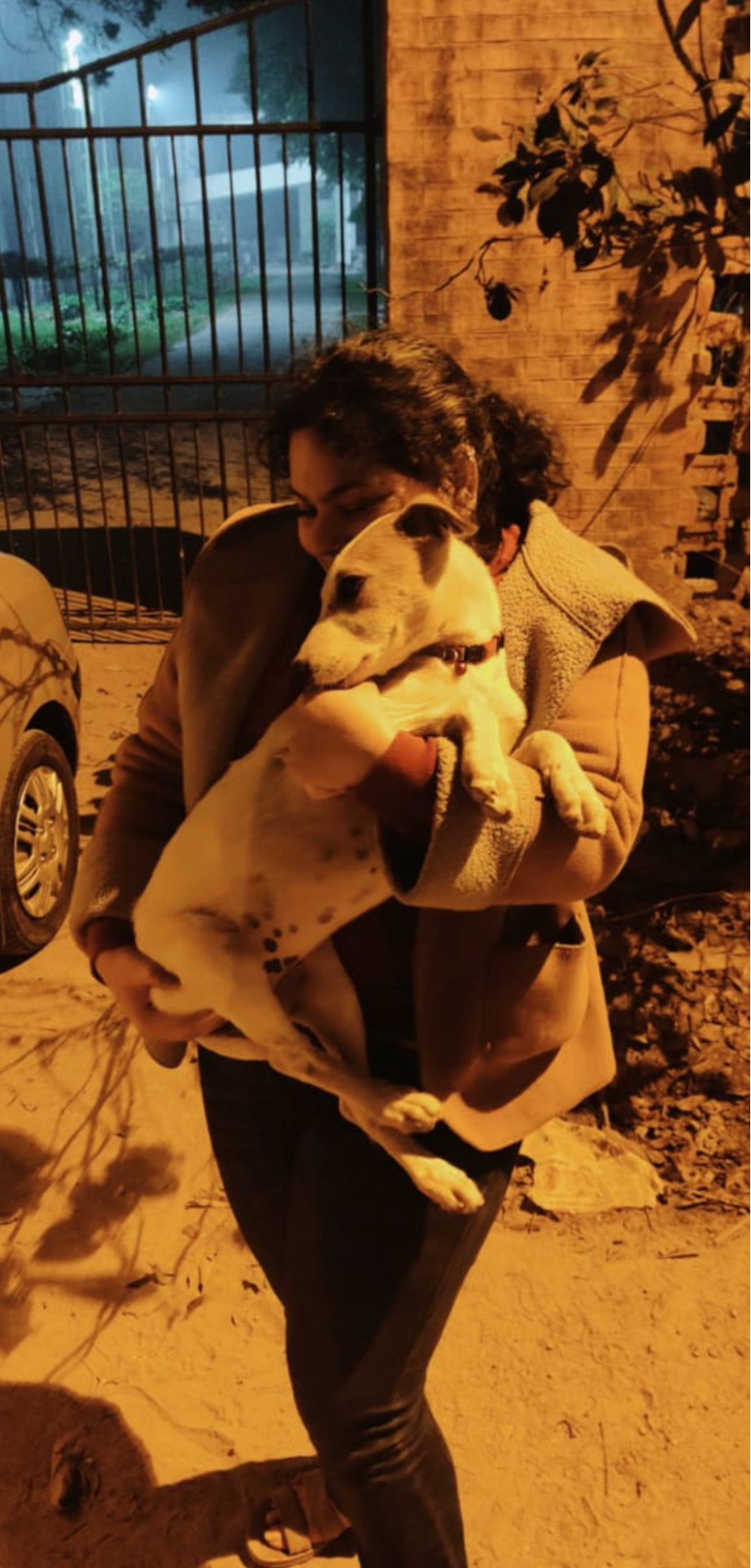

Body of IITR
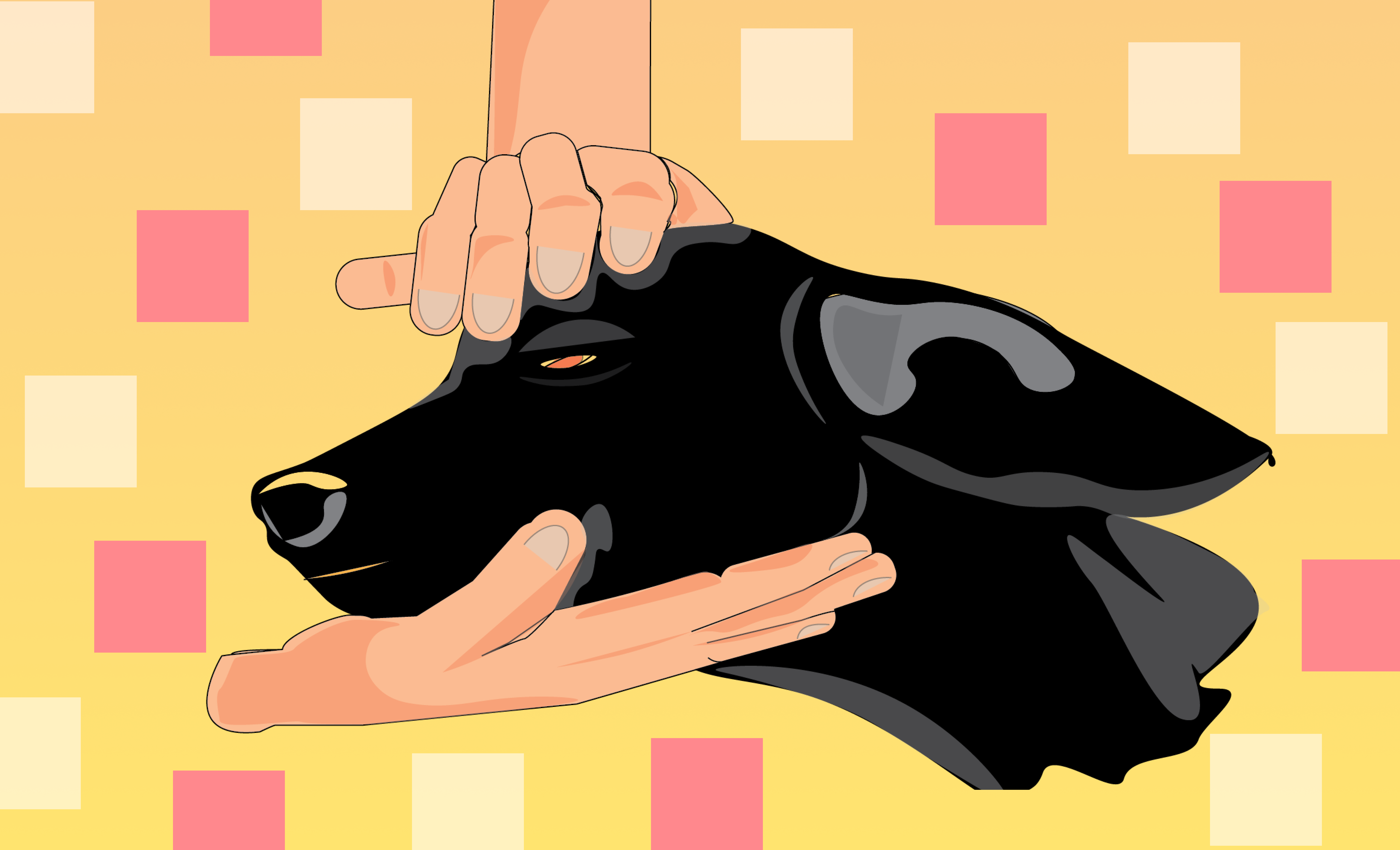
Watch Out! had a chance to interview members of the Committee for Campus Fauna (CCF), an administrative body that works for animal welfare. Here are a few excerpts from the interview.
WO!: Could you please elaborate on what CCF is and what they do?
Surabhi: CCF is the Committee for Campus Fauna. It is an administrative body, and we work for animal welfare. We have student members, faculty members and a few people from the administration. All of them together make CCF.
Gargi: Also, since we work for animal welfare, anytime there is an issue related to human-animal conflict or interaction, we are often called upon to give our advice. That’s another role I’ve noticed we play a lot on campus.
WO!: What was the scenario of animal welfare on campus before CCF existed?
Pallavi: Before CCF existed, there was another body called Roorkee CARES; their Instagram page still goes by iitr_cares. It is a group of people who work on an individual level for animal welfare. It was started by Gargi Ma’am, Gargi Thakur(an alumnus) and Surabhi. After reports of cruelty against animals emerged, these couple of people joined hands to be there for the voiceless. These incidents drastically seemed to have reduced when they intervened. After CCF became an official committee, people in campus came to know that there is a body responsible for dealing with animal welfare and conflicts between humans and animals.
Gargi: Surabhi and Pallavi championed the idea of CCF as an official body. Before CCF existed, it was hard to be in regular conversation with the administration regarding animal cruelty cases and negligence. Every other month we would notice a different dog with a spinal injury because someone hit them with a stick or ran a vehicle over them. After the formation of CCF as an officially recognised body, we are doing our best to work with the administration to increase the awareness of animal laws and what we can do to prevent human-animal conflict on campus. Thanks to Surabhi and Pallavi, there’s a voice regarding what is the legal and morally considerate way of dealing with animals.
WO!: Who are the founding members and currently active members of CCF? How is it different from IIT Roorkee Cares, the organisation that existed before?
Gargi: Yes, it (CCF) is very different from IIT Roorkee CARES. So, in case of IIT Roorkee CARES anybody on IIT Roorkee campus who wants to volunteer to help an animal in distress, cares for or is concerned about animals on campus can become a member. Even though a lot of student members of the two groups are the same, their scope is different.
In CCF, we have Dean administration and the DoSW, whose nominees actively participate along with other important official administrators from our campus. We also have a faculty chairperson, who currently happens to be me. We also have student representatives.
I don’t consider Surabhi and Pallavi to be student representatives; they are the founding members of CCF.
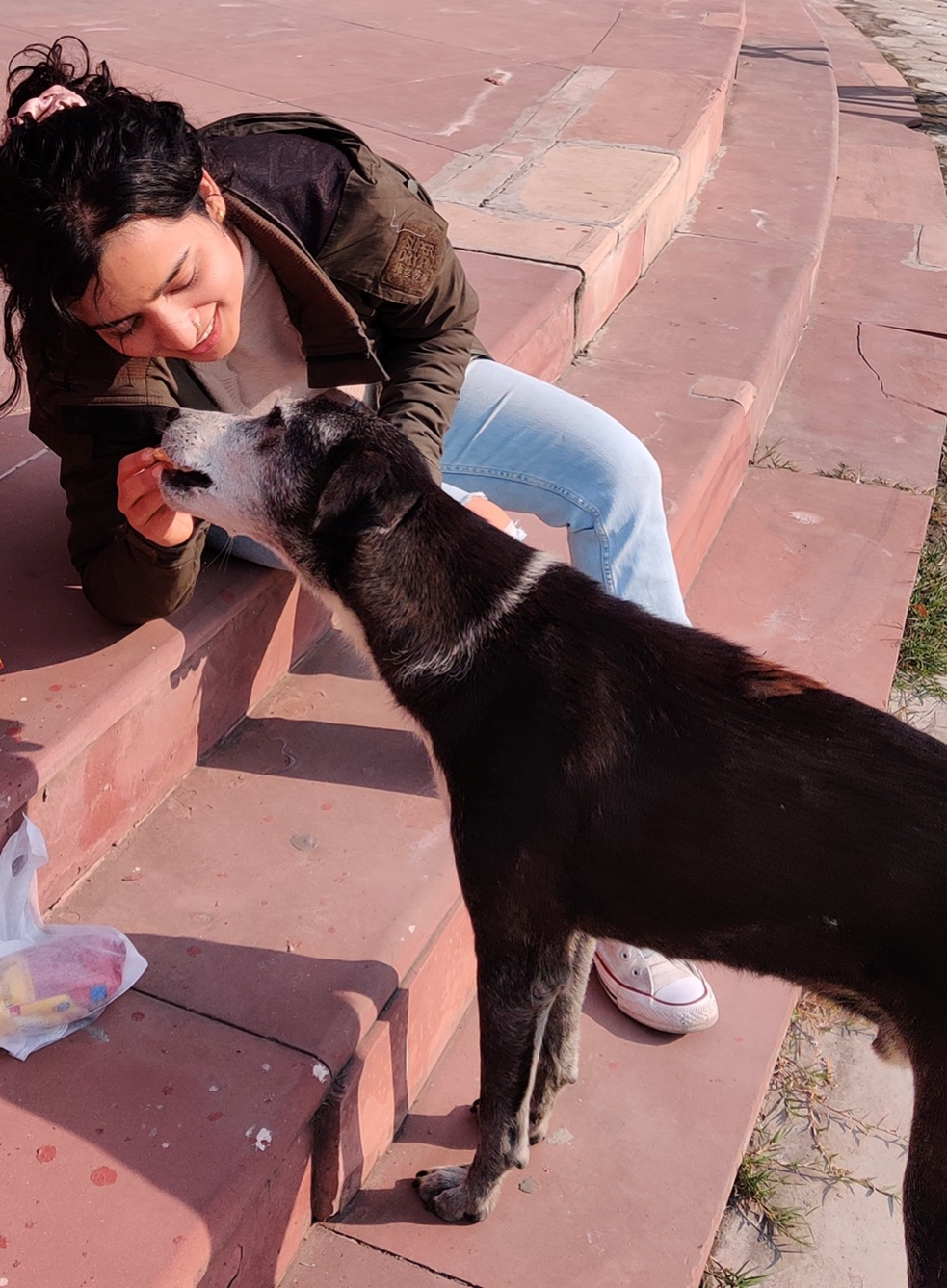
WO!: How did CCF work during the lockdown as hardly any people were left on campus?
Surabhi: So there were two lockdowns. During the first lockdown, a few students were still on campus as they didn’t vacate the whole campus. That lockdown was much better for dogs as a few students took care of dogs and fed them. Still, we used to raise funds every month. Usually, we ended up collecting funds within ourselves. We had a few faculty members and students who used to donate. We would approximately spend Rs. 17000 per month on dog food during the first lockdown; this was the situation when there were few students on campus.
Then the second lockdown happened, and there were no students on campus. I think that was the worst for the dogs on campus. We fed 150+ dogs, took care of their medical needs, and had only 5 or 7 volunteers on campus. Few were faculty wards, and 2 or 3 were PhD students living in married hostels. These five or seven people took care of 150+ dogs on campus during those months, EVERYDAY yes, every day and it was emotionally and physically tiring for them as well. We are thankful for them because if they weren’t here and they weren’t feeding Chattu, Shuri, Meera and all these dogs, they wouldn’t have been here. During the first lockdown, all siblings of Meera died because there was no one to take care of them. Only Meera survived. So that’s what happens when no one takes care of them.
Gargi: During the lockdown, I was on campus, but students weren’t. So, we had problems pushing the administration for sterilisation of dogs, as a result there were many new puppies on campus during the lockdown. These pups weren’t taken care of, and their mothers were not sterilized. Hence now we had a dog population in areas where we didn’t want dogs to be there, like certain hostels. The problem was we had so many puppies during lockdown that we had at least two local epidemics of Parvo Gastroenteritis on our campus which doesn’t affect humans but is nearly deadly for dogs (90% fatality rate). We lost so many dogs; it was so heartbreaking. Every week our PhD students were helping us and the faculty had to bury so many puppies. In total, we had 2-3 waves of this virus during the entire duration of the lockdown. Lockdown was physically, emotionally and financially exhausting for us and deadly for many of our campus animals. Lockdown was very hard.
Surabhi: I remember one female dog gave birth to 12 puppies and only 2 survived. All of them died of Parvo. I think it’s still here on campus and new puppies have a high risk of contracting Parvo
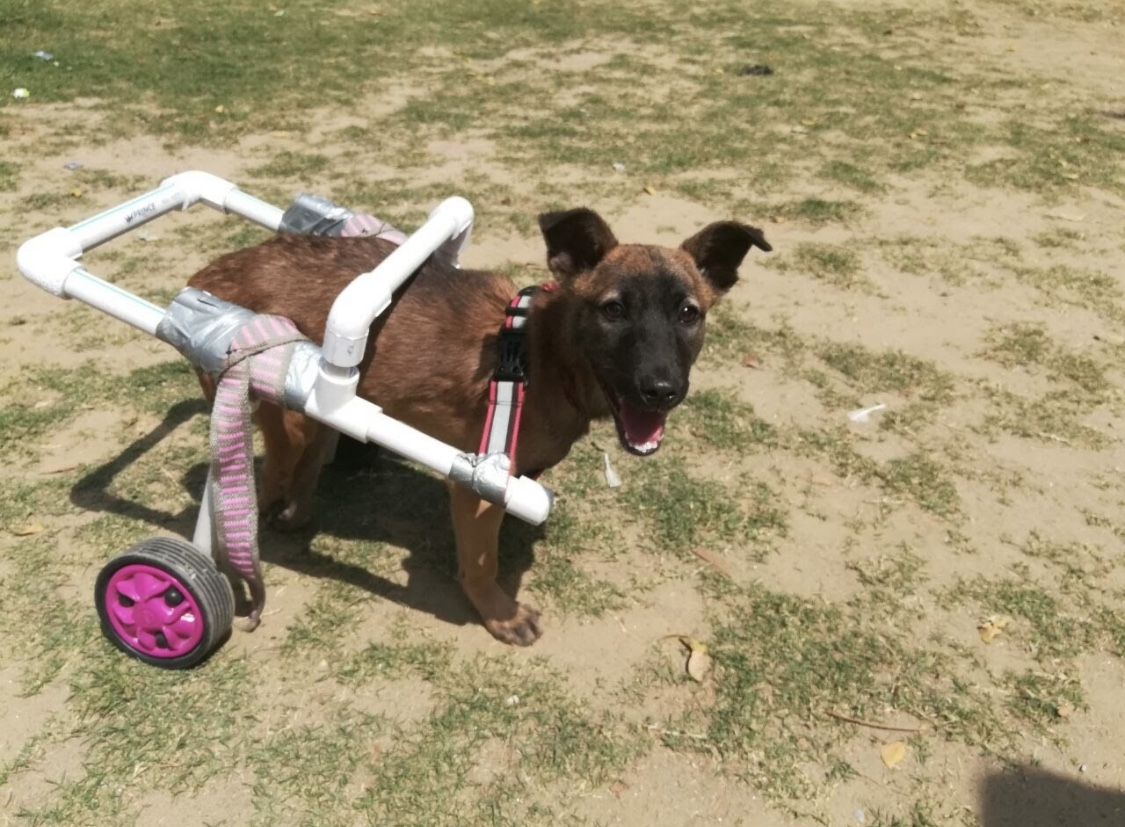
WO!: As you mentioned that the virus is still there among the dog population, have there been any more cases of puppies passing away or has it declined a bit and just had a certain spike during the lockdown?
Surabhi: Yeah it is better because there are many students who can take care of them and notice them on time now when they’re not eating and refusing food for days. We can call vets or paravets to campus and get them checked. So I think after the second lockdown, when I came back to campus I saw 7 or 8 cases of Parvo virus and we didn’t let any of them die. Every puppy got treated so I think it was much better after the students came back.
Gargi: CCF despite being an official body still relies completely on donations which means every puppy that we treated was funded by Surabhi, Pallavi and a couple other donors on-campus.
WO!: What are the major challenges that CCF faces in their working?
Surabhi: As for the biggest challenges, two of them can take the first position in terms of issues- volunteering and donation. We lack both of them because maybe we aren’t able to motivate students, like every time there’s a medical emergency or there’s some other kind of need, we don’t have anyone to be there or be present and take the dog to the hospital. So, its just 3 or 4 people I think in the group, you can see them everywhere. If it’s a medical emergency you would just see those 3 or 4 people and its very taxing physically and emotionally for them to just be there every time because they have their own work and they have their own deadlines. So volunteering is the biggest challenge we have and the second is donations, also because we are not able to collect donations still after being an official body. It has been hard for us.
Pallavi: I also think that another challenge is that the campus boundaries are porous. So, we just now had a sterilization drive but we still see some new puppies and we don’t know what the case is that whether someone leaves them here from outside or they come by themselves. Whatever the scene is, the issue is that the boundaries are porous.
Surabhi: I think every two or three days we get a new message in our group saying there’s new dogs here. Like yesterday we got a message that there are new puppies in the Green Gala. We don’t know if someone’s leaving them here because it has been happening for a few months. That you would see a bunch of new puppies in the same area. They are small puppies which indicates that obviously someone is bringing them here. It’s not good because we are working so hard to sterilize and the new pups keep coming in, it increases the conflict. Also we lack a bit of awareness. We need to work on this by organizing workshops etc. because people on campus still need to understand a lot about dogs and their conflicts and their behaviour. I think its mostly fear and ignorance from where people’s issues stem mostly they are just afraid, they think that dogs shouldn’t exist on campus because they are afraid. The need to increase the awareness among such people is also a challenge.
Gargi: Okay this may not be a challenge limited to IIT campus alone. I’ve noticed that in our very unequal society, we lack trust and social empathy, which translates into our lack of empathy for animals who don’t look like us (humans are also animals.) In case of dogs, we might be very much in love with a German Shepherd or Golden Retriever that we follow on Instagram but when it comes to our own desi campus dogs, we have zero empathy.
We may even want to take care of a dog who’s suffering in front of our eyes in our hostel but again, because of our unequal society we think this is not our job (as if it is beneath us and) someone else should do it, CCF should do it. I suspect the reason why we don’t get volunteers is because we lack the ability to see equality in all life forms.
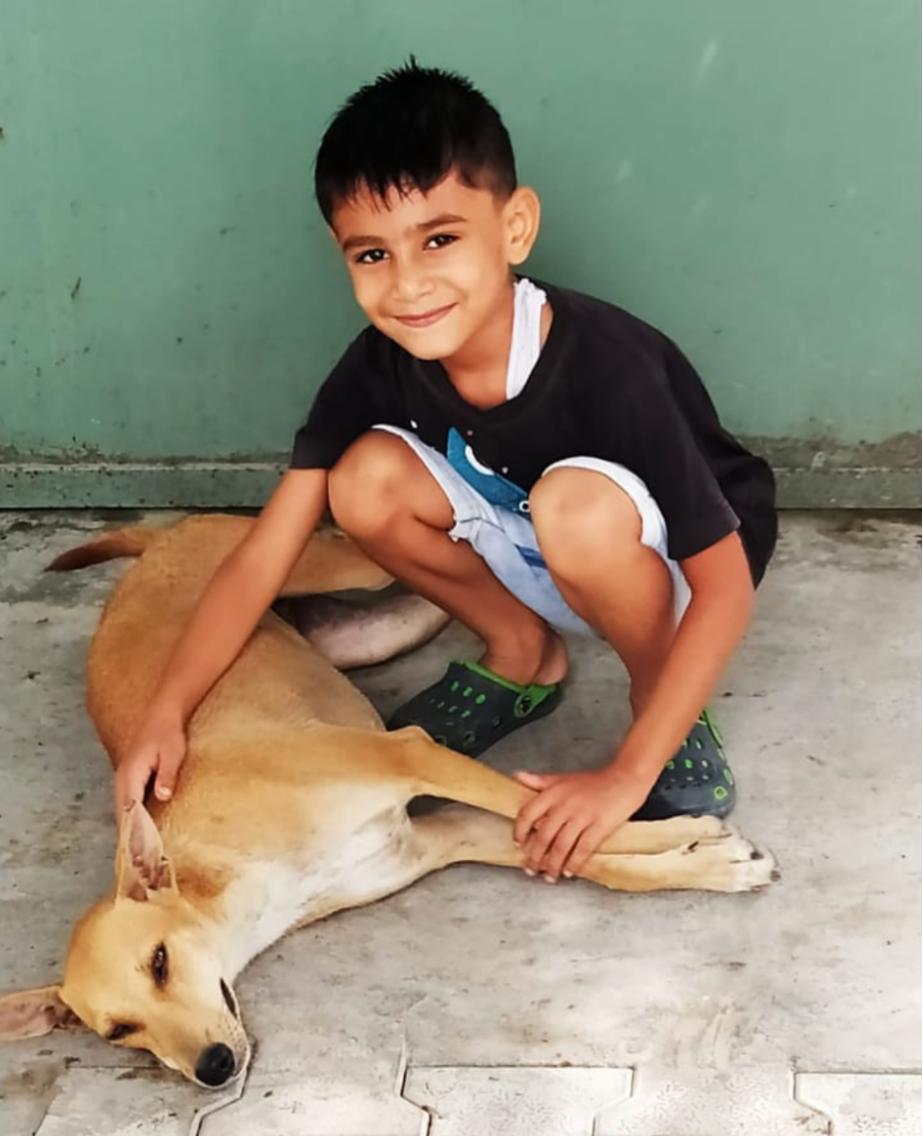
WO!: Do you have a certain recruitment process? How are people supposed to join as volunteers?
Pallavi: The number of people interested are so low that there is no filtration/selection process. Our current aim is to have members from all hostels so that we have people from different zones of campus. What we have noticed is that, although people love the idea of helping animals and showing love, but when the time comes to take responsibility, they shy away from it , and CCF hasn’t quite figured out how to motivate them. It can also be due to fear that they might do more harm than good as a lot of people do not how to help injured animals. However, in that case it will be good if they come forward to learn or to see if this is something they would like to do. Another problem CCF faces is the lack of recognition and people are simply unaware of its presence. We have been trying to address this issue by adding more people to WhatsApp groups and having more meetings through our instagram handle.
Gargi: Students who have reached out to us in past usually have had a practice of taking care of animals in their families, and are usually already inspired and interested in taking care of animals. But as Surabhi and Pallavi have mentioned, when it comes to actually taking sick and injured animals to the hospital, it is just us.
WO!: Did you receive any sort of aid/support from the IITR administration, or did the administration refuse to show support since Roorkee Cares already existed at that time?
Surabhi: Roorkee Cares was a very small organization and was not recognised by the administration. It was basically a WhatsApp group of like-minded people who worked for animal welfare. After this, there were incidents of relocation of dogs on campus because of the increasing population of dogs. After 2016, mass sterilization was not carried out till this year, that is 2022. We pushed the administration to form CCF, because we knew that to bring any real structural change, we will have to be a part of the administration. This way they would have more say in the decisions concerning dogs and other animals.
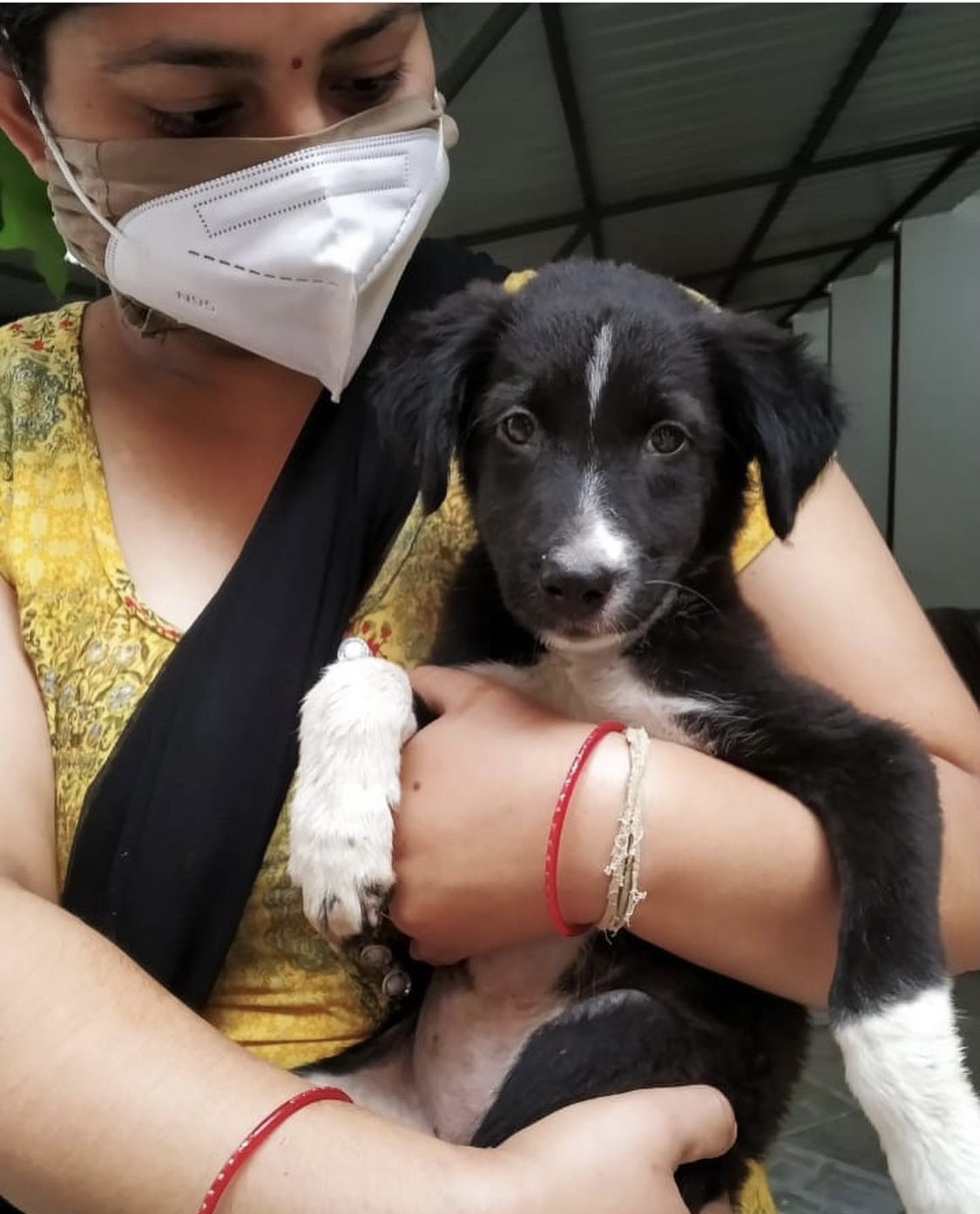
WO!: Is there any other government organization which helped you during the mass sterilization?
Surabhi: Yes, An internationally recognised NGO “Humane Society International” which conducts similar mass sterilization camps all over India helped us with this initiative.This NGO has a proper team of Doctors and Dog catchers. They were responsible for setting up a mini hospital for dogs within campus in which they sterilized around 47 dogs and vaccinated around 70 for rabies. Most of the friendly dogs which were easy to catch have been vaccinated and sterilised, only a few weren’t able to get caught. Although the very fertile females were administered with contraceptives since the first lockdown.
WO!: Is the act of cutting a dog’s ear in order to show it’s sterilized recognised all over the world?
Surabhi: The cutting of a dog’s ear (in V shape) is done to show that it is sterilized is commonly practiced all over the world and it is the most feasible way. The body spray comes off when the dogs grow new fur and the dogs somehow manage to break free their collars too so cutting of the ear is the best possible solution. Since it’s done under anesthesia it’s not painful for the dog.
Pallavi: There are cuts made in different shapes(such as V shape, horizontal etc.) and each has a dedicated meaning. For example, if a vet begins the procedure of neutering and finds that there is some problem internally and the procedure cannot be done, they have a different mark for that. It is like an encoding mechanism for the people involved in the sterilization process. Be it NGOs or vets, they follow the same code pan-India, to work more efficiently.
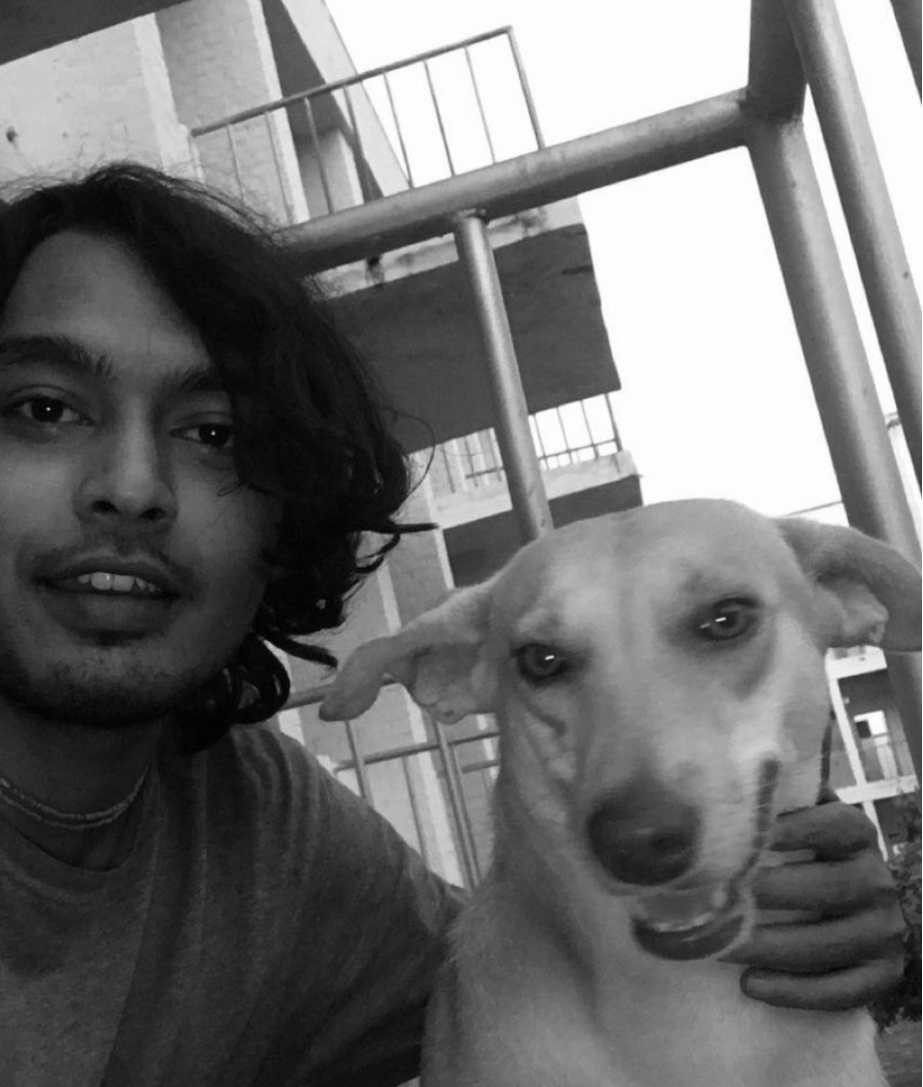
WO!: Apart from the mass sterilization, what other initiatives are going on right now?
Surabhi: Actually we are working on 2-3 objectives. We want to organize one talk by Professor Chakrapani. He was the vice-chancellor of a prestigious university. He has worked a lot for wild animals and given many talks.We were just waiting for all the students to come back. We are also looking to organize sensitisation workshops for which we contacted some NGOs and have convinced animal behaviorists.
Pallavi: The first thing on our agenda is recognizing where the boundaries are permeable and informing the dedicated department for the same. Boundary porosity takes a toll on the sterilization efforts. New dogs are spotted inside campus frequently. They might venture in through gates, drainage system, short walls, and so on. The new dogs are new to humans on campus and hence are likely to be unfriendly. They might have diseases since they are unvaccinated. Plus they will get into fights over territories with campus dogs.
One more thing to note is that the dogs that are sterilized are also vaccinated then and that is a good thing. We would like to have the vaccination drive annually which will be beneficial both for the dogs and humans. Next thing on the agenda is to have awareness on the campus regarding dog behaviour, animal protection laws, why should we care?, etc. We are also looking for volunteers as we will be leaving the campus soon so we need some people who can shoulder the responsibility.
Surabhi: We are also thinking of working on their shelter and feeding points. In summers it is fine, but in winters they need proper shelter. Dogs in boys’ hostels have a comparatively luxurious life since they sleep on their own mattresses and even in rooms. One more thing is that we are working to have a collaboration with NSS. If we have a collaboration with NSS and animal welfare become a part of NSS, it will become easier for us to get volunteers and funds since NSS is a very reputed and much bigger organization than ours.
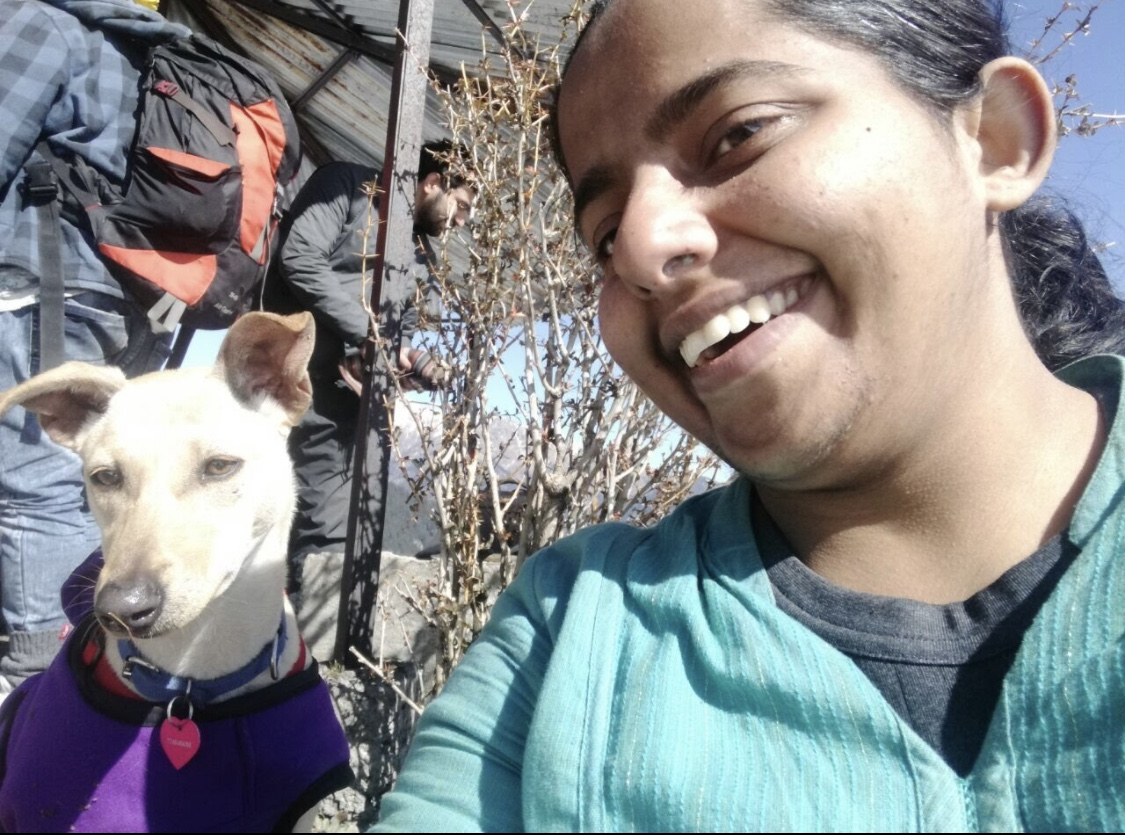
WO!: Comparing pre-lockdown and post-lockdown, has there been any significant change in terms of numbers of groups of students who turn up as volunteers?
Surabhi: I have always seen people loving dogs in Jawahar. There was this old dog named Keith, and then there was Gauri after that, she was also a very old and beloved dog. Dogs have become a very important part of the culture of Jawahar Bhawan. There have always been students who like dogs. After the lockdown, there have been more cases of human animal conflict. Since students stayed at home for 2 years and the campus was empty, in a few hostels the dogs lived alone. These dogs got used to people’s absence from the hostels and tended to bark at people as they came around again. Some of the students also didn’t want dogs to be in their hostel. I won’t say that there has been a positive shift in the post-lockdown era in terms of conflicts. Despite all this, dogs have been an irreplaceable part of Roorkee.
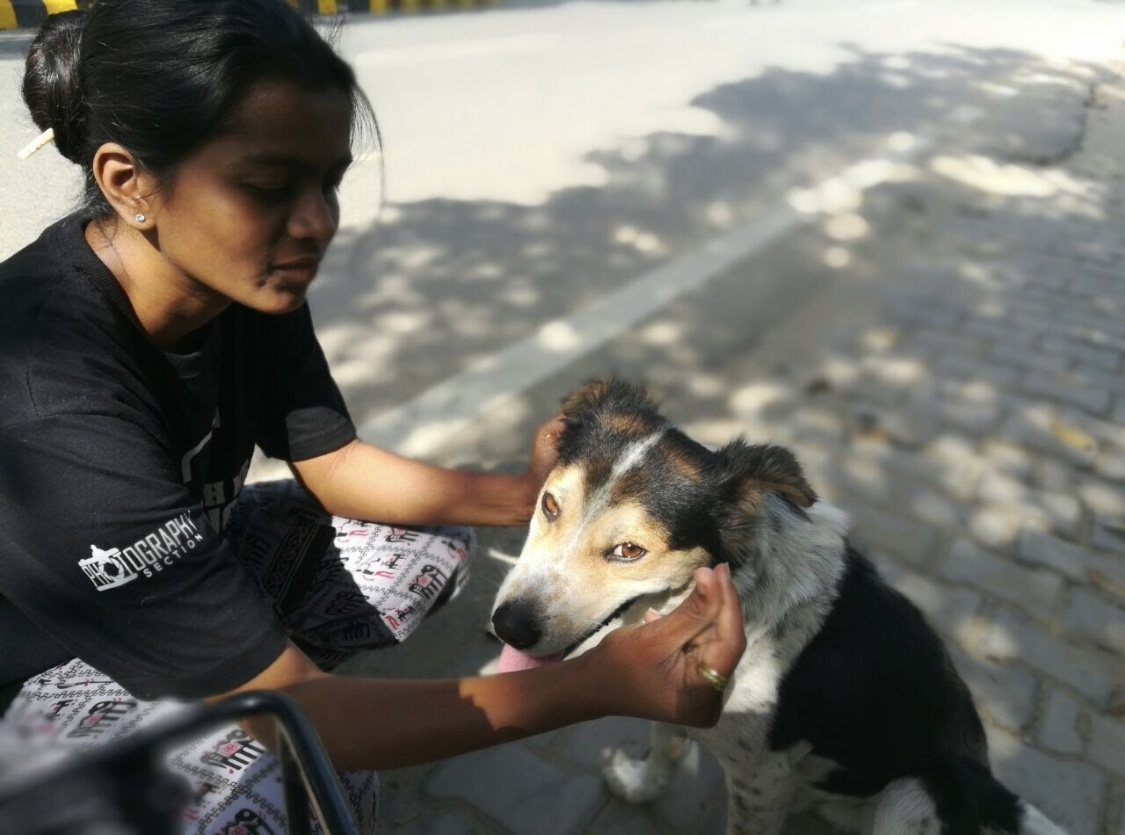
WO!: Dogs like Chattu and Meera are famous throughout the campus and people often visit them whenever they are in Jawahar. Do you also have some fond memories of a particular dog?
Surabhi: I have a lot of fond memories about Meera. Since the time I joined campus I have known Meera’s mom. She gave birth to 2 puppies before also but unfortunately they died. Before the lockdown, Meera’s sister also lived in Jawahar. She looked just like Meera, her name was Julie and she used to bully Meera. She used to bully everyone, especially Meera. When they were little, she wouldn’t let Meera eat anything. Unfortunately due to the lockdown she died. Most of the dogs, even if they don’t let you touch them, are friendly. Obviously, dogs have their own issues, they are just like humans in a way that they are all different, they have different behaviors toward different situations. But mostly they are friendly and loving.
I have always wanted to make this documentary about all the dogs on campus. Initially I only knew a few dogs on campus, but just after the second lockdown, there were very few students on the campus, so I used to feed dogs and go around the campus, that was when I got to know all of the dogs on campus. So I will make a movie about all the dogs on the campus, it would be so much fun, so far I never got a chance to work on this but I always think about it and I want to do it once before I go, because there are so many dogs with such colorful personalities.
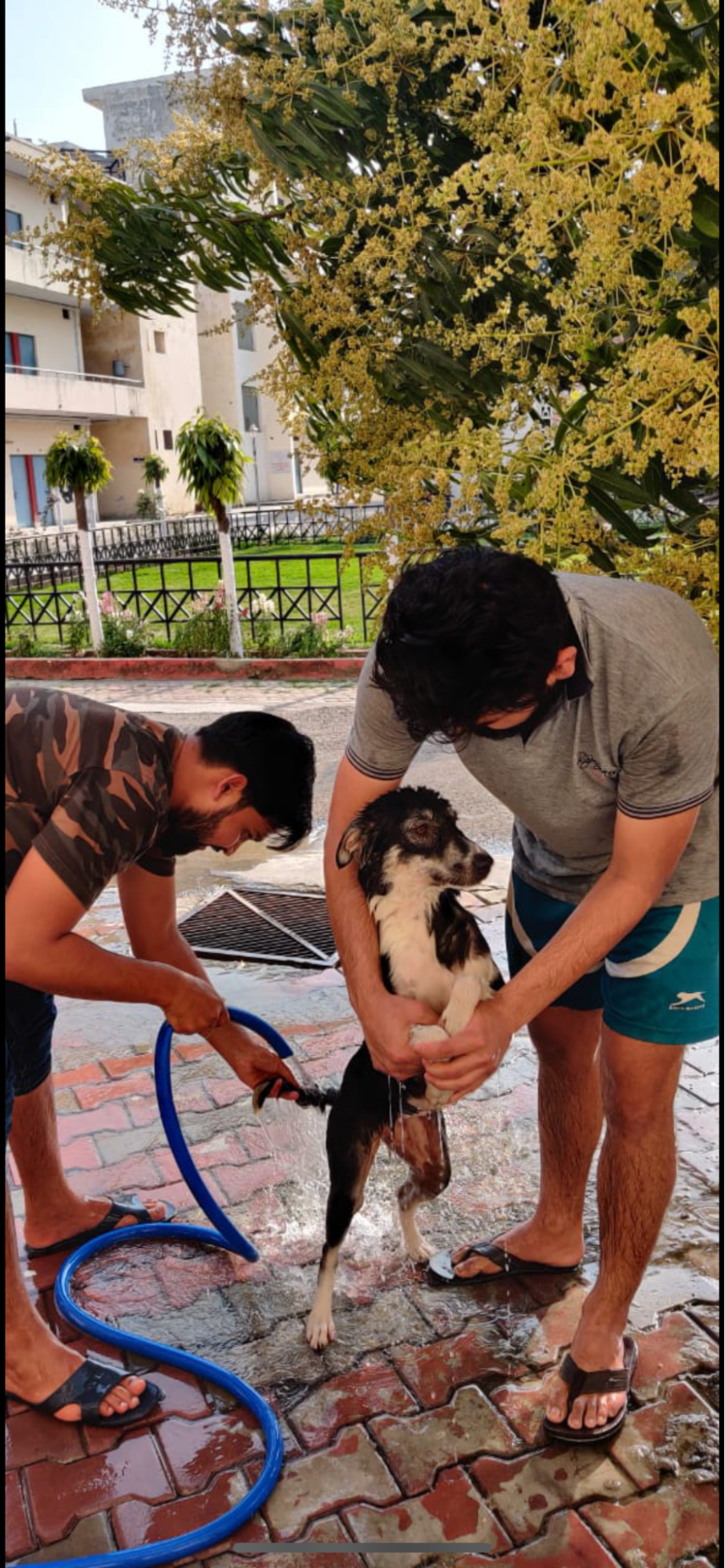
WO!: That does sound really fun. That got me wondering, how many dogs are there on the campus actually? Are you sure about the total number?
Surabhi: I would say between 120 to 150, and I might be knowing about a 100 of them. Some of them are in hostels, some outside, some are always hiding, some keep coming and going in and out of campus, so there are approx 120 to 150 dogs on the campus.
WO!: On a personal scale, what was your motivation to get involved with the work that CCF does?
Pallavi: My journey for CCF started because of sad incidents. So Shuri, who is Meera’s mom, gave birth to 2 puppies. We named them Parker and Sirius. A lot of people used to feed them including me. One day, Sirius got hit by a motorbike and passed away. The municipality people took his body and I was on my way back to the department, when I saw Shuri and Parker helplessly looking for Sirius in the area his body previously laid. Shuri came towards me, I stopped my bike, she put her head on my thigh and started crying. That was the day I was moved. That was the day that I felt that we need to have a better system for things. Unfortunately, I never found Parker since the next day of this incident. Don’t know what happened to him.
Surabhi: I used to feed Ram Pyari in Sarojini Bhawan. Gargi Thakur saw me feeding her when she was passing by so she asked me if i wanted to join this whatsapp group they had. Initially I was a mute member of the group. I used to see all the messages and I wouldn’t do much. One day Gargi ma’am mentioned that there was construction going on and there was this dog howling for 2 days. The construction workers threw the dog out. Gargi ma’am noticed she had a huge wound on her back. Her whole back was eaten up by maggots. So Gargi maam asked on the whatsapp group if anyone could accompany her in taking the dog to the hospital. I was free that day so I volunteered to go, I thought how bad could it possibly be, I hadn’t seen a maggot wound in my life. And then I saw the dog. Oh God, it was the first hands-on experience I had. After that I felt this strong sense of responsibility that these things happen to dogs and we need to do something about it. Then after that I got an urge to be an active member of this group. That one incident changed me for the better.
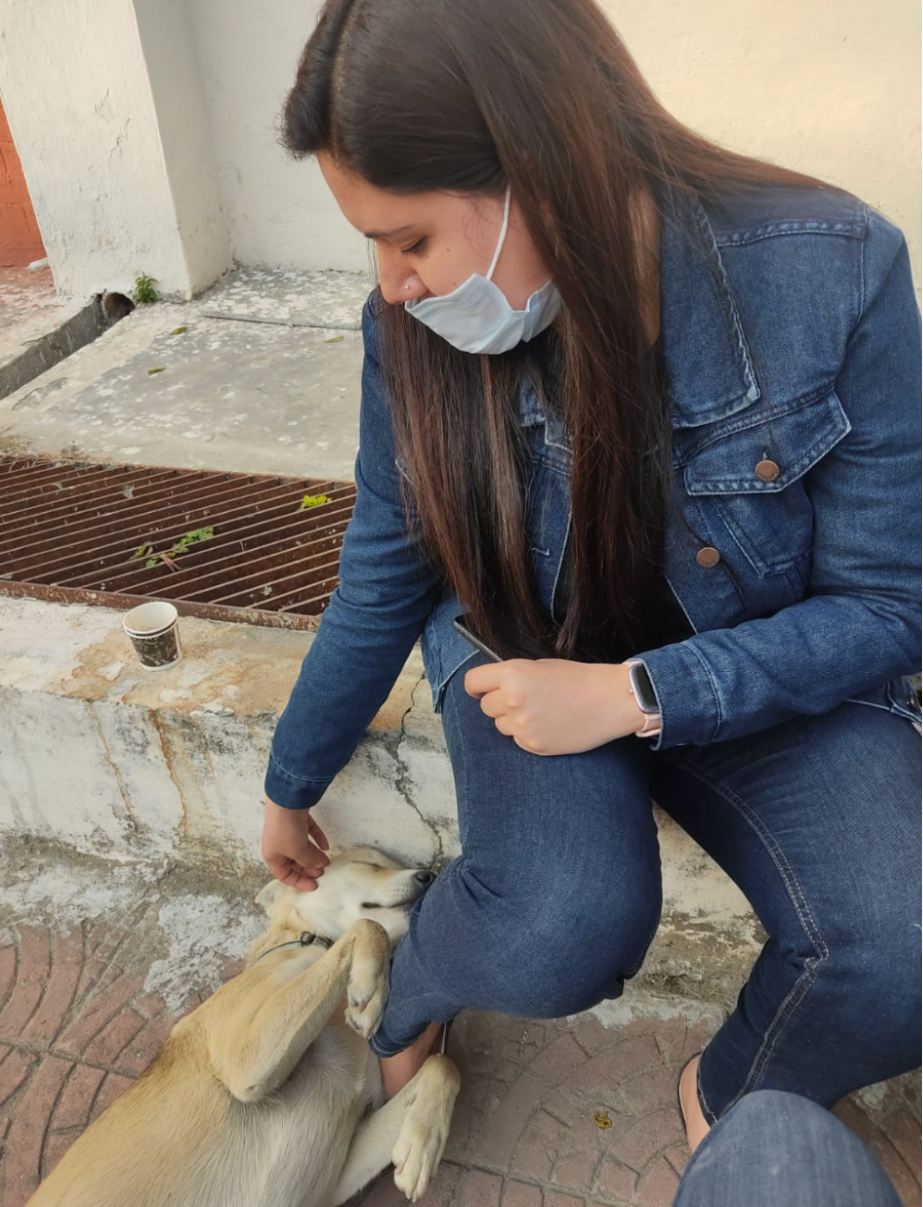
WO!: Do you have any long term plans for the group?
Surabhi: I haven’t thought of this before. So I have this screenshot of a very beautiful shelter, it is a metal cage, open though, complete with grass and warm beds to sleep in. So if it is ever possible in the future of IIT Roorkee to facilitate these beautiful beds for dogs, that would be great. Other than that i’m not sure, Pallavi if you have any in your mind?
Pallavi: So for us, as we’ll be leaving the campus soon, we need students, who are willing to shoulder the responsibility, be at the forefront of these issues and are passionate about the work associated with CCF.
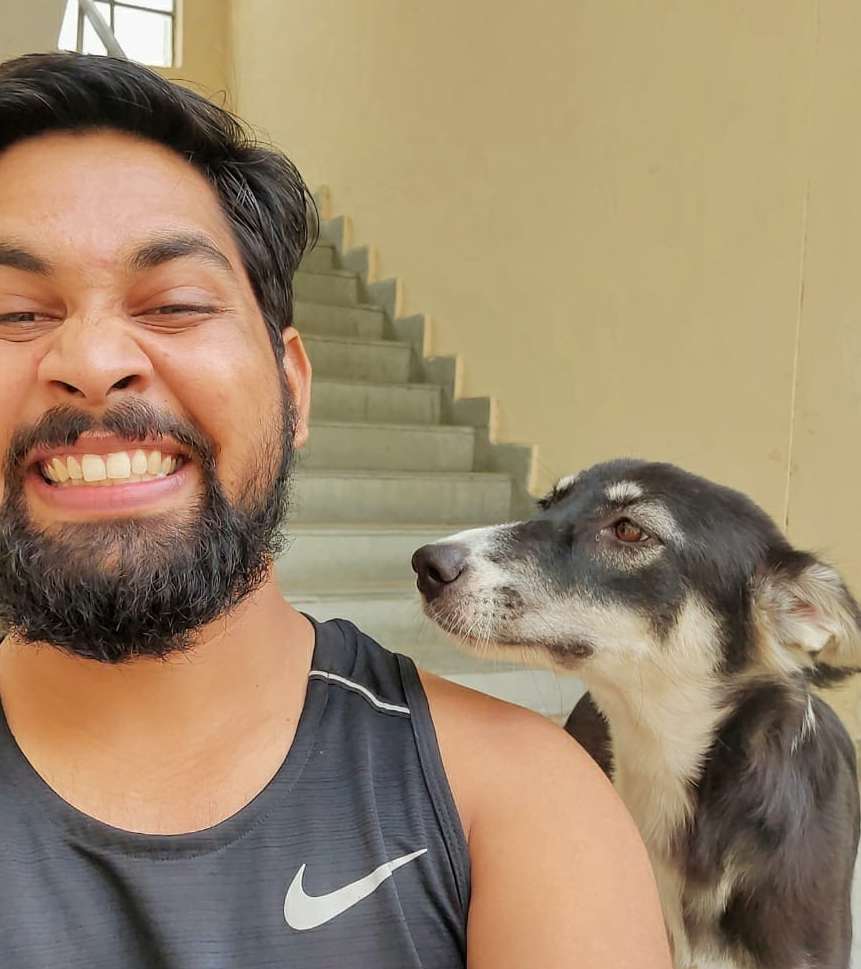
WO!: How many volunteers will you need to take care of all the dogs on the campus?
Surabhi: For now as Pallavi said if we have volunteers from every hostel, that will suffice for now, as then we will have volunteers in every area and I am talking about active volunteers, not those who are in the group and don’t do anything. The thing is we don’t need to volunteer every day. Always there are students and even faculties who are feeding them. We need volunteers only when there is an emergency. That is rare, but if it is emergency, we need instant help. So yeah if we have few volunteers from every hostel, that would be okay.
Pallavi: Yeah, for he medical emergencies, they dont happen every day. But since we want to address the situation all across the campus, I think active 20-25 students will be fine. Everyone will not be available everytime but this way there can be a buffer and the responsibilities can be carried out without any hiccups.
Surabhi: For medical help the animals are taken to a nearby government hospital, like there are many issues there also. We will be providing certificates for volunteering. It’s also one of our goals. I think one or the other way, providing some kind of incentives motivates students, which is understandable. If volunteers can help us in digital push, or social media management it would be great for us because that would attract more people. We need help for handling our instagram account and a few other things, so that would be great.
Pallavi: Yeah it’s also a thing we had a conversation regarding with the administration. They are also ok with giving out the certificates. But then we don’t have students who are consistently working yet.
If you are interested in joining CCF, or if you want to have a friendly conversation, you can contact them at:
Email: ccf@iitr.ac.in
Instagram: iitroorkee_cares
